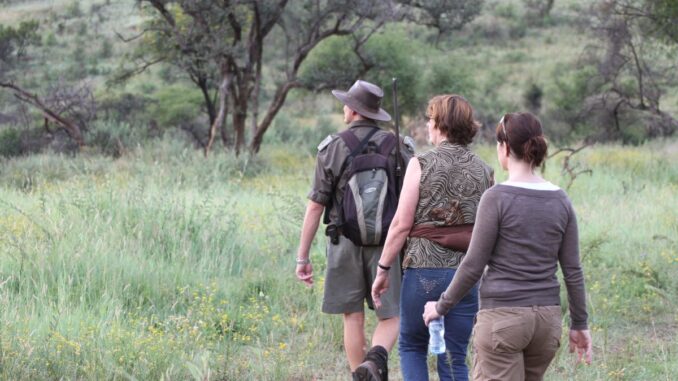
An enormous volcanic eruption 1.3m years ago gave North West Province its star wilderness destination, and a place which today offers excellent wilderness walking. The circular shape of Pilanesberg National Park defines the remnants of that seismic event, a series of heavily eroded concentric rocky circles rising over 1500m above the surrounding flat landscape.
Since its proclamation as a reserve in 1979, a thriving and diverse ecosystem has developed and it has become a popular wildlife tourism destination, thanks in large part to its proximity for residents of Gauteng: just over two hours to the park’s Bakubung gate from Pretoria. Its rugged jumble of hills and narrow valleys makes it interesting terrain for walking and for a big chunk of the South African population, Pilanesberg’s proximity makes it one of the few places to pack a couple of guided trails into a weekend.
To experience a walk in the park, one option is to stay at Sun City/Lost City or one of the many other resorts and lodges fringing the south east of the park, and arrange an early pick up. Or better, as we cover in Walking Safaris of South Africa (Chapter 12), to stay at one of the two Legacy hotels inside the park and avail of their guided trails.
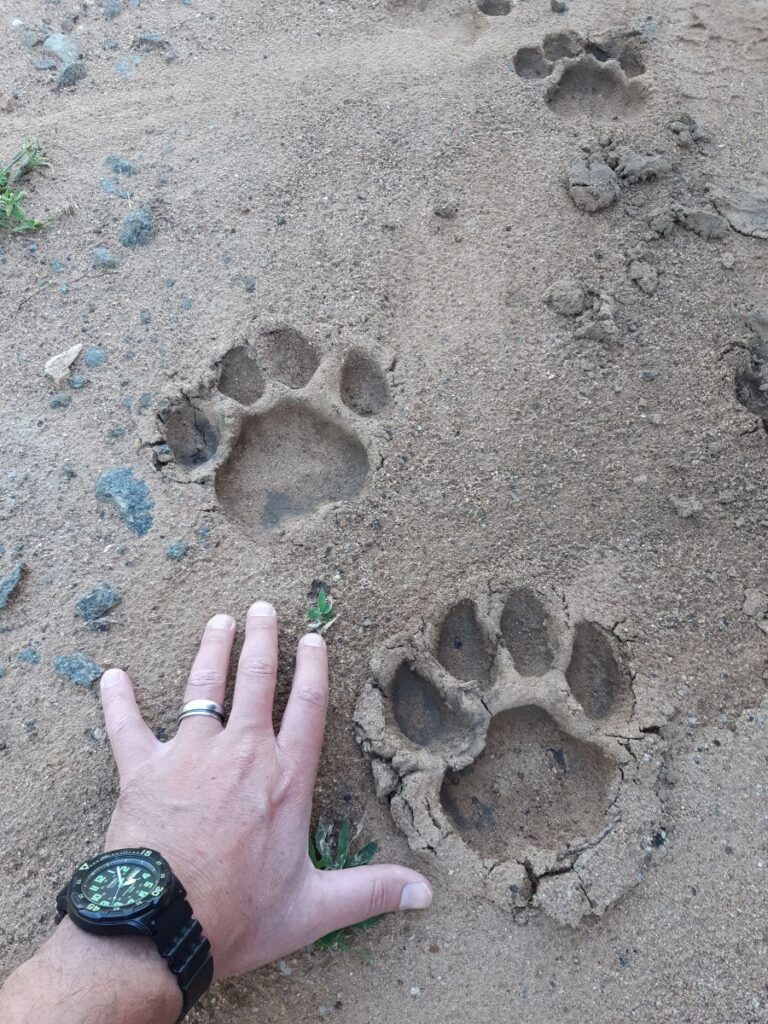
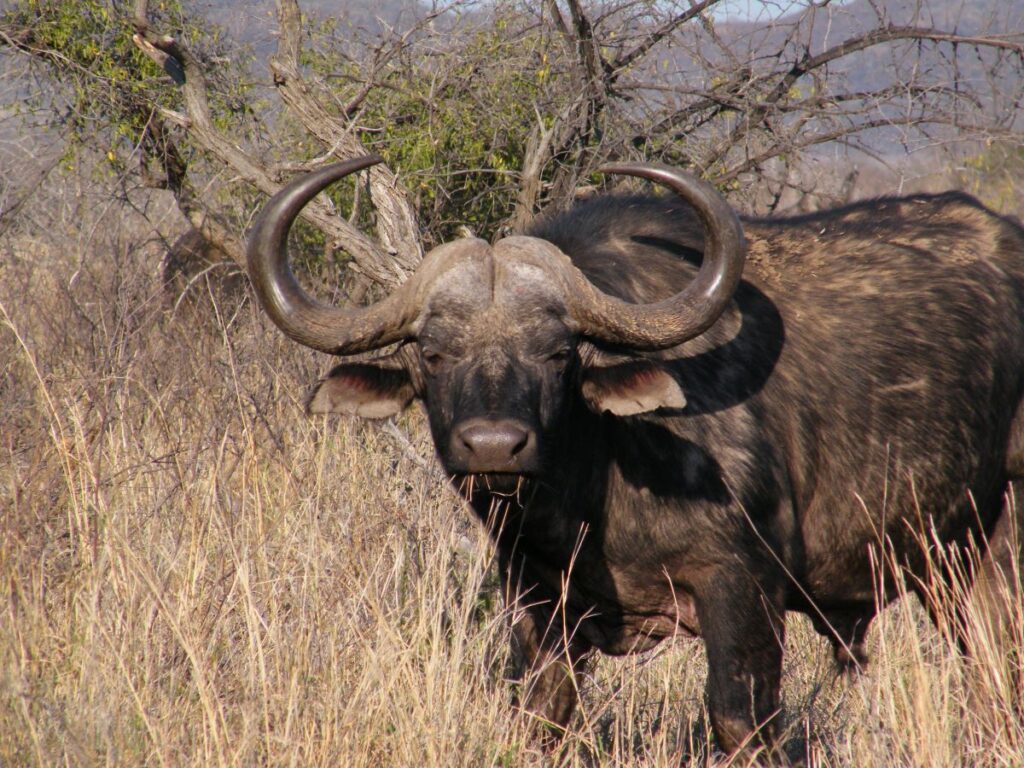
There is another interesting walking option, and that’s to drive a further half hour and circle the park to reach Black Rhino Game Reserve. This private reserve is integrated into the north west of Pilanesberg – no fences – and yes, its sweet veld vegetation is perfect for the browsing habits of the black rhino. There’s also white rhino, elephant, buffalo, big cats and many other species to be encountered here.
From a guided walking perspective, the reserve is of special interest because it abuts the wilderness zone of Pilanesberg, a pristine 130km2 quadrant with no vehicle access. Like the wilderness-zoned areas of Kruger National Park, this area is strictly reserved for access on foot. It’s important that these zones are used for guided walks, and not succumb to pressures to open new vehicle tracks or construct more camps and lodges, which diminish the wilderness. Not only are walks zero impact, they also serve as additional “eyes on the ground” that can monitor for signs of wildlife crime in passing.
For Black Rhino reserve guests, walks are guided both in the reserve and in Pilanesberg’s wilderness zone by Nare Walking Safaris. Nare’s Jeandré Nothnagel knows every rock and tree in the park as he has been guiding trails there since 2005, but favours this wild corner. “It’s unspoiled, no roads, and there’s a good variety of terrain, meaning the walk can stick to lower lying areas, or head for climbs and viewpoints” he says. “And on top of the wildlife, we find some historical sites from the Tswana people, and from the Afrikaner farmers that stayed in the area before it was proclaimed as a park.”
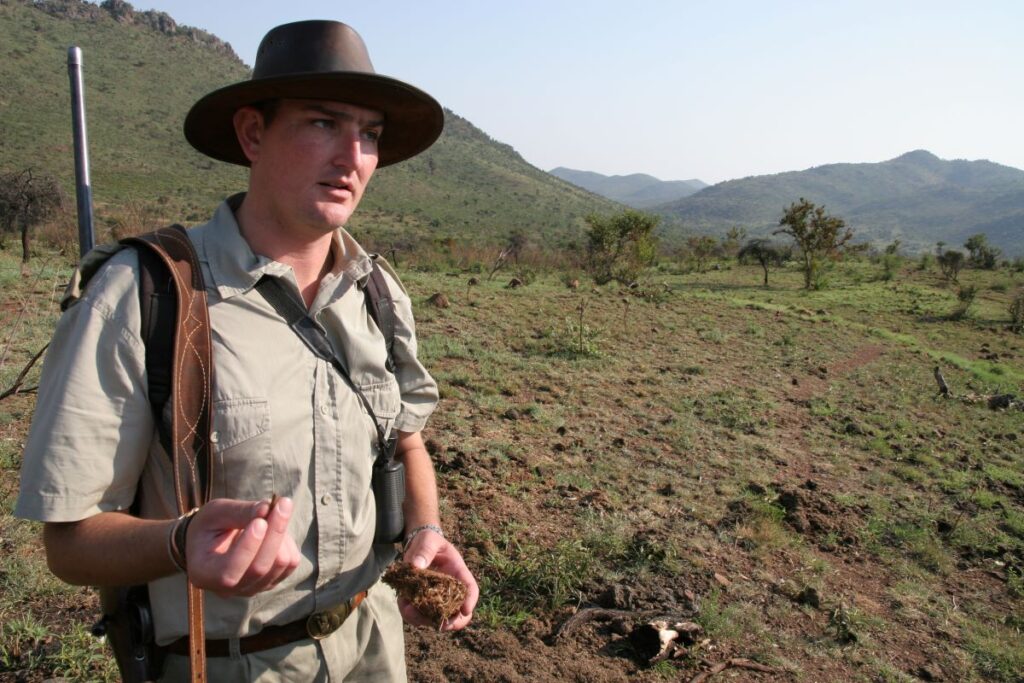
There are about ten lodges in Black Rhino reserve and while Jeandré is affiliated with Pilanesberg Private Lodge, he is happy to pick up guests from any of the other lodges. The normal routine sees the group gather at dawn for a 30-minute drive by game-viewing vehicle up into the higher ground of the park. Guests should bring water, and may carry a packed breakfast (the lodges are happy to arrange this), or return to the lodge for breakfast by 9 or 10AM.
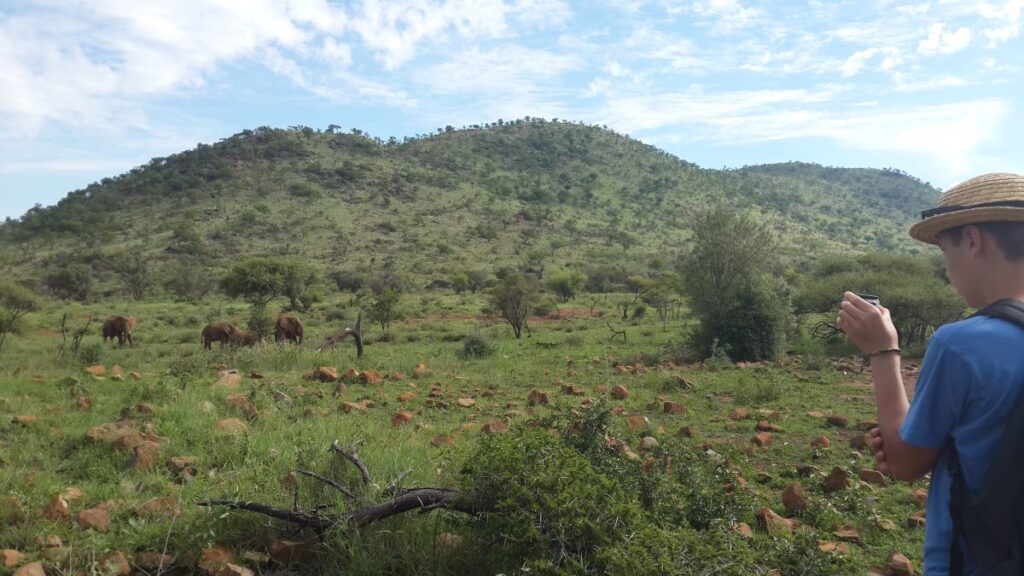
With a big chunk of Pilanesberg’s wilderness zone to explore, there is enough variety to give repeat guests some new experiences, and Jeandré can also arrange walks in other concession areas of the park by prior arrangement. Meandering on game tracks, the walk’s route and duration are tuned to the interest and fitness of the guests, with time to perch on vantage points and see what turns up.
Guests can request walks when making a booking for the Black Rhino lodges, and pricing will be advised. The minimum age is 16, and walks are offered year round. Contact Nare Walking Safaris directly at nare.walks@gmail.com and via Facebook and @nare_walks on Instagram.
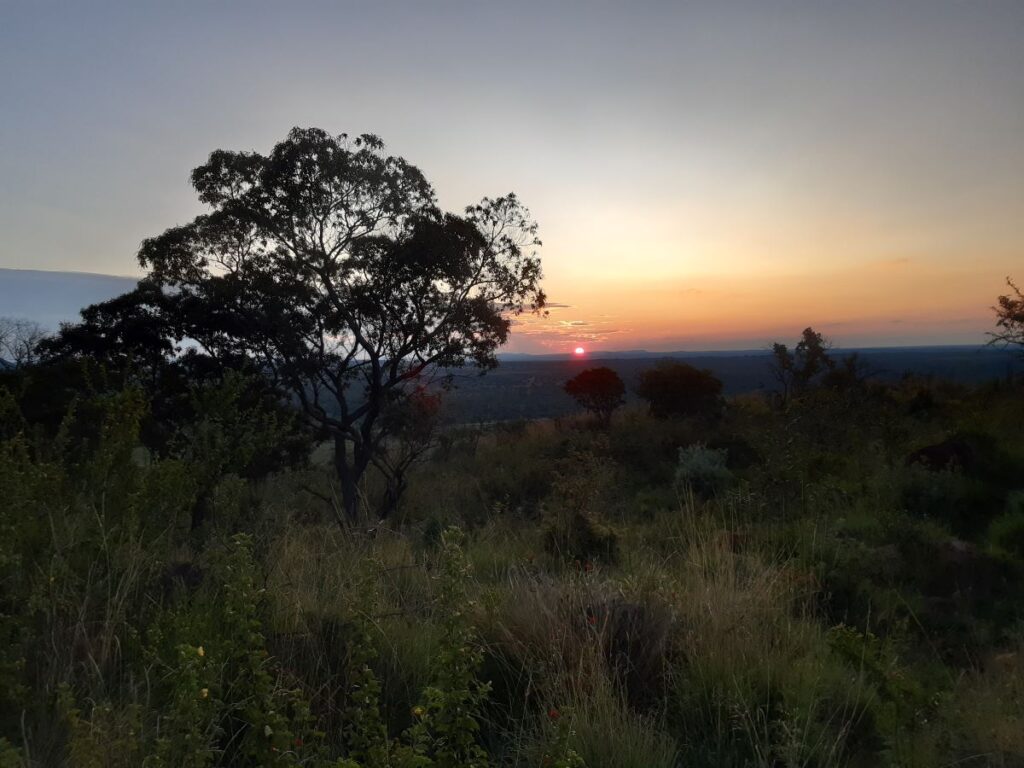
Photos courtesy Jeandré Nothnagel.

Leave a Reply